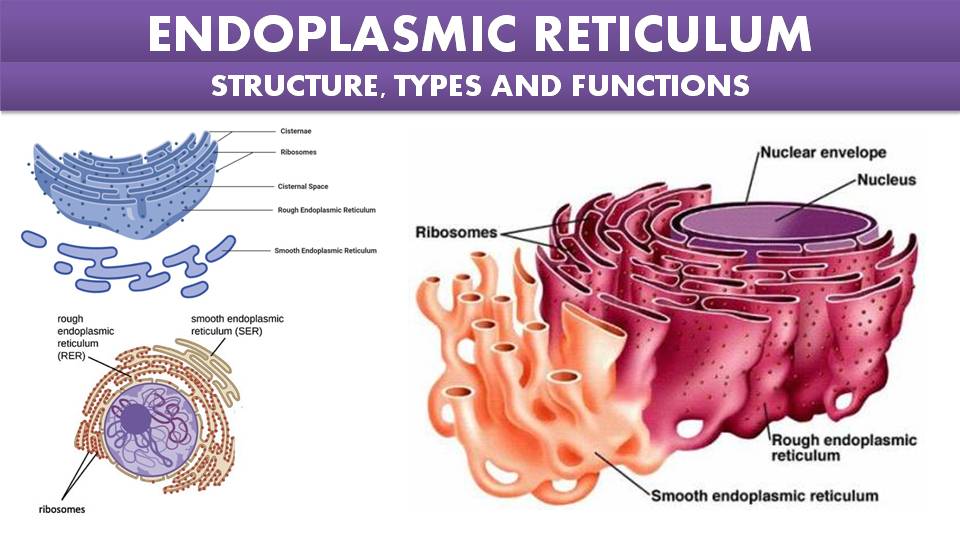
Endoplasmic Reticulum Structure, Types and Functions Class 11 & NEET Free Notes Rajus Biology
ADVERTISEMENTS: In this article we will discuss about the structure of endoplasmic reticulum. This will also help you to draw the structure and diagram of endoplasmic reticulum. 1. It was discovered by Porter (1945) as fine recticulum in endoplasm of cells and named as endoplasmic reticulum (E.R.). 2. It is a complex interconnecting system of […]

Endoplasmic reticulum Biology lessons, Plant cell, Animal cell
The endoplasmic reticulum (ER) is a series of interconnected membranous sacs and tubules that collectively modifies proteins and synthesizes lipids. However, these two functions are performed in separate areas of the ER: the rough ER and the smooth ER. The hollow portion of the ER tubules is called the lumen or cisternal space.
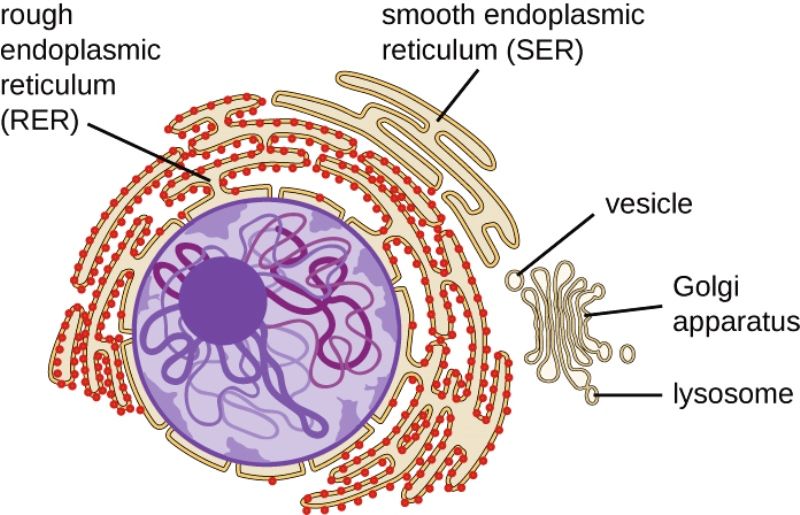
Smooth Endoplasmic Reticulum Structure, Functions and Diagram StudiousGuy
1.8: Endoplasmic reticulum. The endoplasmic reticulum (ER) is a complex system of membranes, tubules, cisternae and vesicles, appearing in two types: smooth and rough ER. Smooth ER is comprised of interconnected vesicles and cisternae that do not contain ribosomes. Smooth ER is involved in sterol biosynthesis, detoxification reactions and fatty.
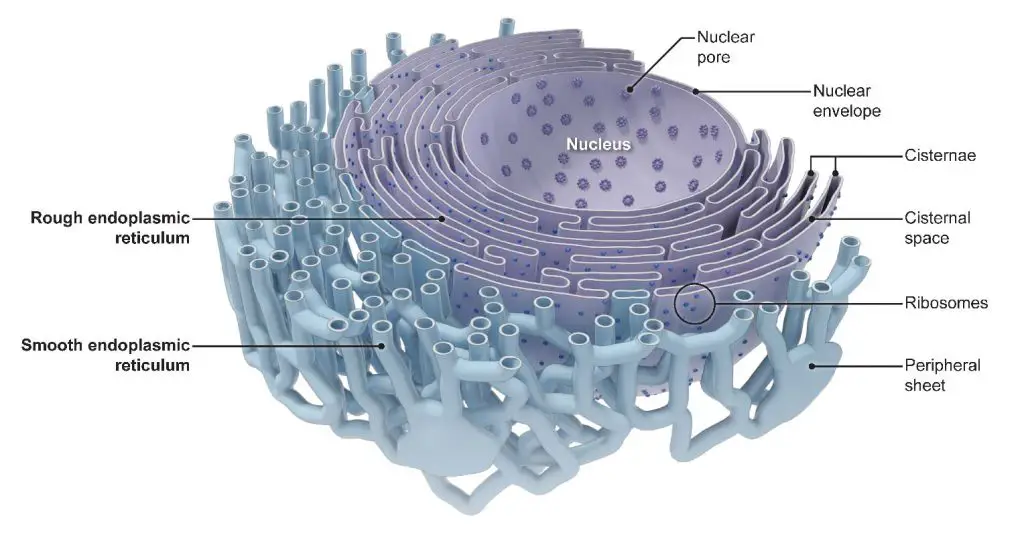
Endoplasmic reticulum the cellular inter definition, structure, function, and biology
As I am sure you know, the ER (endoplasmic reticulum) is a network of cisternae around the nucleus. Thus, there is only one network of ER in a cell, but within that is a number of sacs and tubes that make up the entire ER. As for the Golgi apparatus (or body), is to is made up of multiple sections of cisternae (just like the ER, yet in a different formation), and there are often multiple.
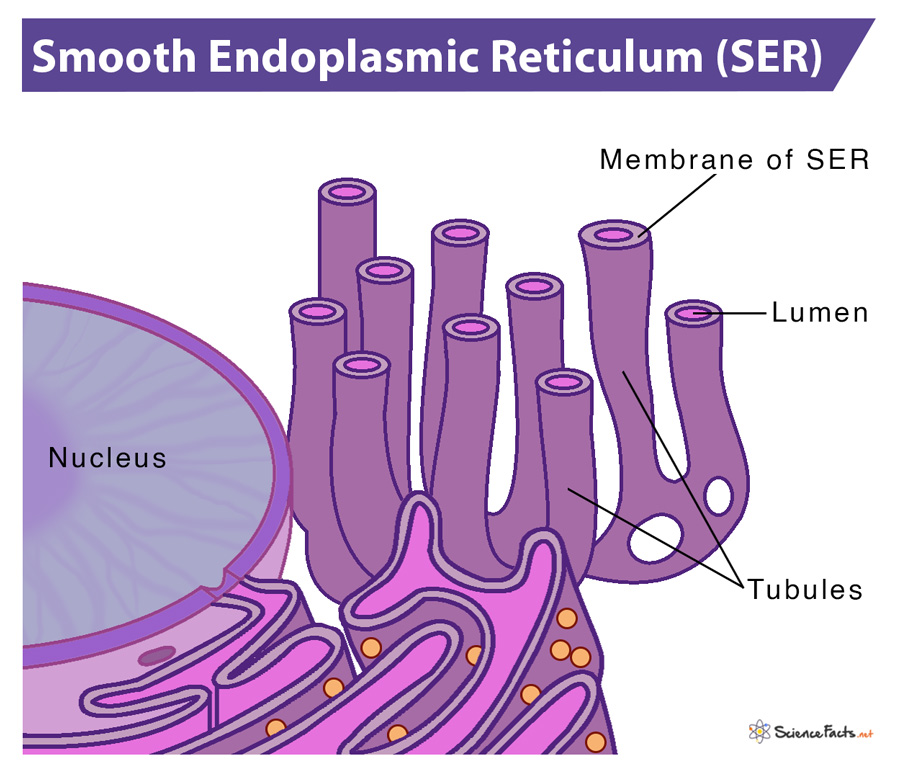
Smooth Endoplasmic Reticulum Definition, Structure & Functions
The endoplasmic reticulum (ER) is a large organelle made of membranous sheets and tubules that begin near the nucleus and extend across the cell. The endoplasmic reticulum creates, packages, and secretes many of the products created by a cell. Ribosomes, which create proteins, line a portion of the endoplasmic reticulum.
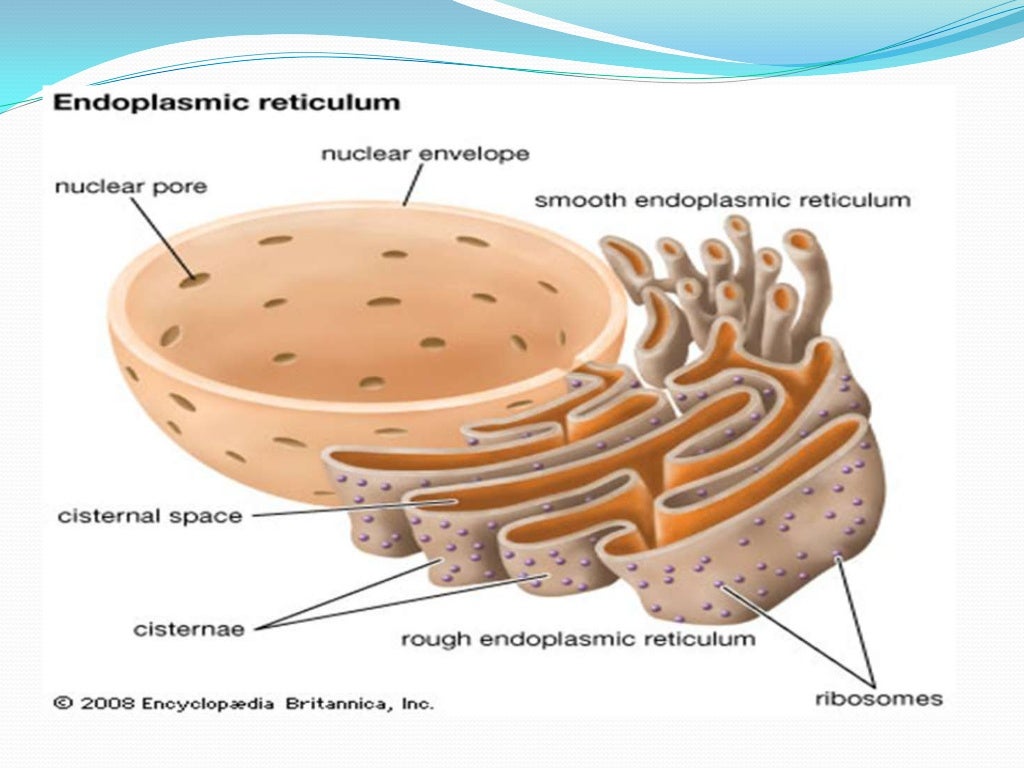
Endoplasmic reticulum
The ER can be classified in two functionally distinct forms: smooth endoplasmic reticulum (SER) and rough endoplasmic reticulum (RER). The morphological distinction between the two is the presence of protein-synthesizing particles, called ribosomes, attached to the outer surface of the RER.The functions of the SER, a meshwork of fine tubular membrane vesicles, vary considerably from cell to.

PPT Smooth endoplasmic reticulum PowerPoint Presentation, free download ID6856228
3. List the functions of the endoplasmic reticulum. The endoplasmic reticulum performs the following functions: It is responsible for the production and secretion of steroid hormones. It is also responsible for the synthesis of essential lipids such as phospholipids and cholesterol. It is responsible for the metabolism of carbohydrates.
/endoplasmic_reticulum-56cb365f3df78cfb379b574e.jpg)
The Structure and Function of the Endoplasmic Reticulum
The endoplasmic reticulum (ER) is a large, dynamic structure that serves many roles in the cell including calcium storage, protein synthesis and lipid metabolism. The diverse functions of the ER are performed by distinct domains; consisting of tubules, sheets and the nuclear envelope. Several proteins that contribute to the overall architecture.

Cell Structure
The endoplasmic reticulum is the major site of synthesis in the cell. It is a system of flattened sacs (cisternae) that are continuous with the outer nuclear envelope. Its physiological function has a very close association with that of the Golgi apparatus and together, they form the secretory pathway of the cell.. The endoplasmic reticulum is classified as either rough or smooth, with minor.

Kinds of Endoplasmic Reticulum Agranular and Granular Endoplasmic Reticulum
The endomembrane system ( endo - = "within") is a group of membranes and organelles in eukaryotic cells that works together to modify, package, and transport lipids and proteins. It includes a variety of organelles, such as the nuclear envelope and lysosomes, which you may already know, and the endoplasmic reticulum and Golgi apparatus.

Endoplasmic reticulum is a continuous membrane, which is present in both plant cells, animal
Endoplasmic Reticulum Diagram. Endoplasmic Reticulum (ER) is the tubular membrane inside the cytoplasm of the cell. Also, ribosomes cover their surface. Besides, the ER has both smooth and rough surface. In addition, they help in the transportation process. Transportation of food material, water and minerals in the body of a living organism.
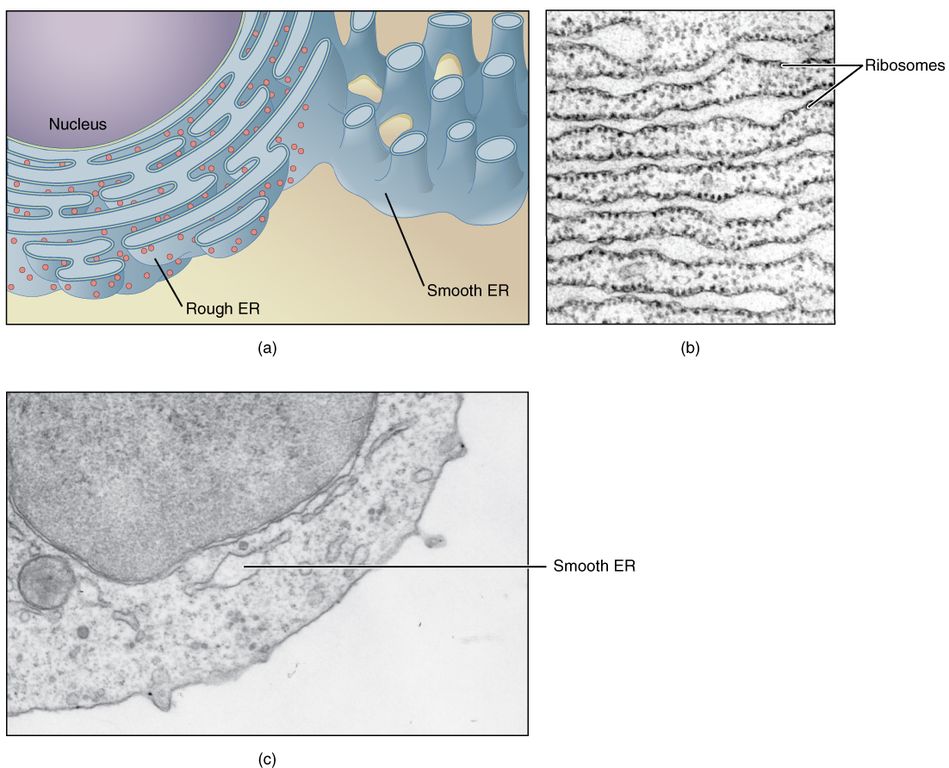
5.9 The Endoplasmic Reticulum Biology LibreTexts
The endoplasmic reticulum (ER) is a network of membrane-enclosed tubules and sacs (cisternae) that extends from the nuclear membrane throughout the cytoplasm (Figure 9.1). The entire endoplasmic reticulum is enclosed by a continuous membrane and is the largest organelle of most eukaryotic cells. Its membrane may account for about half of all cell membranes, and the space enclosed by the ER.

Rough And Smooth Endoplasmic Reticulum In Plant Cell Rough And Smooth Endoplasmic Reticulum
The endoplasmic reticulum (ER) is a large, dynamic structure that serves many roles in the cell including calcium storage, protein synthesis and lipid metabolism. The diverse functions of the ER are performed by distinct domains; consisting of tubules, sheets and the nuclear envelope. Several proteins that contribute to the overall architecture.
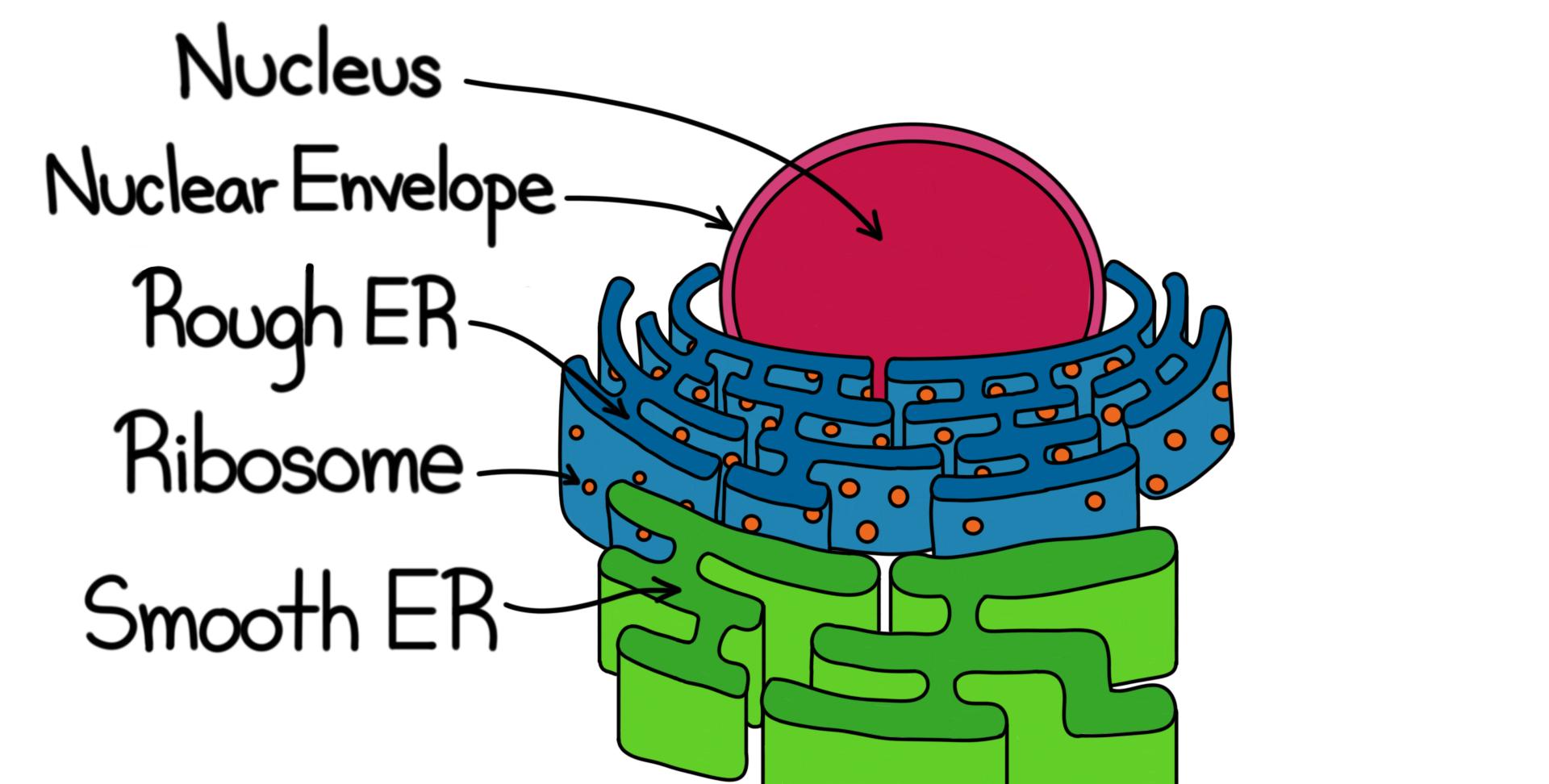
Rough Endoplasmic Reticulum (RER) — Structure & Function Expii
All eucaryotic cells have an endoplasmic reticulum (ER). Its membrane typically constitutes more than half of the total membrane of an average animal cell (see Table 12-2). The ER is organized into a netlike labyrinth of branching tubules and flattened sacs extending throughout the cytosol (Figure 12-35). The tubules and sacs are all thought to interconnect, so that the ER membrane forms a.
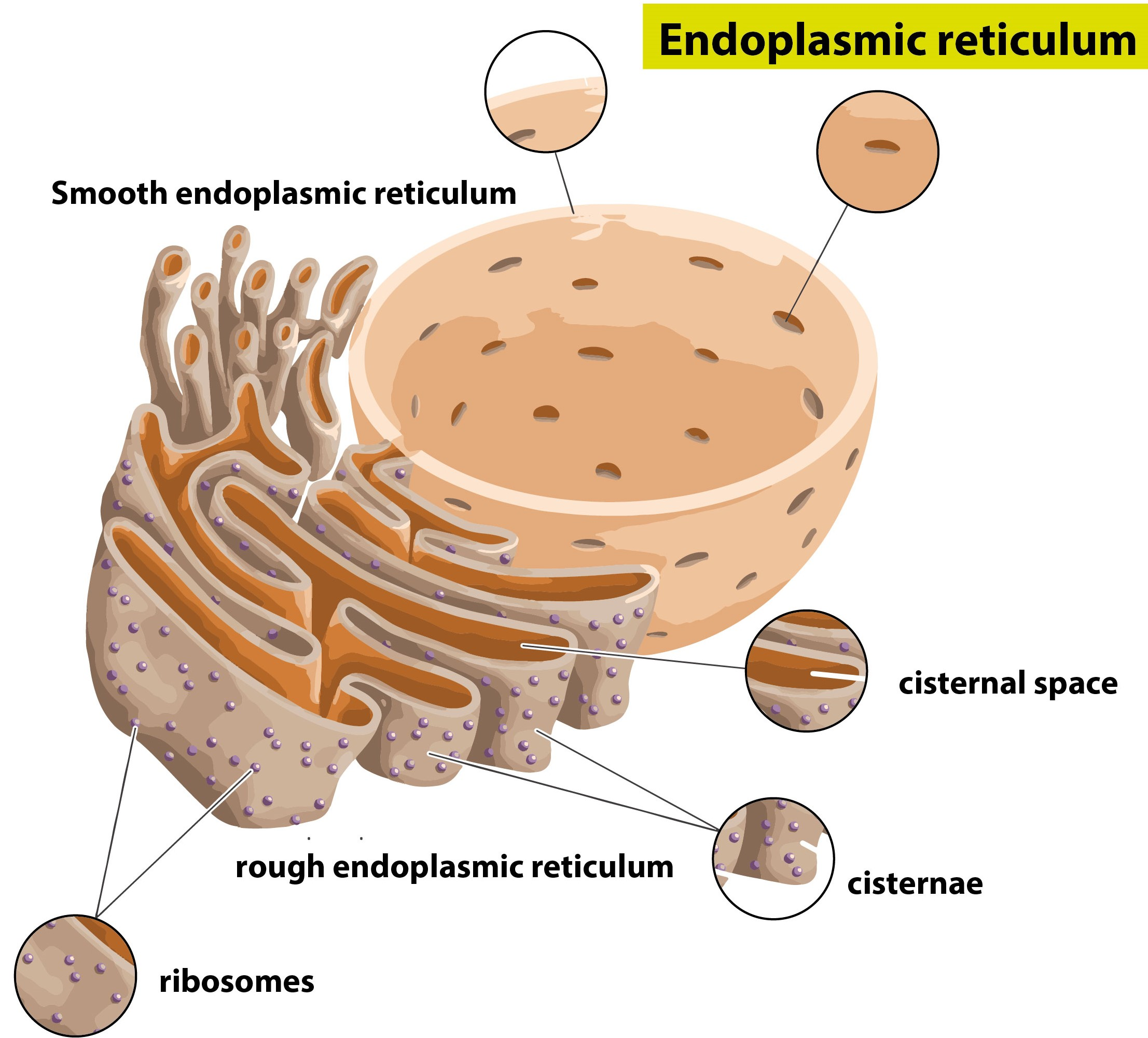
The surface of the endoplasmic reticulum is covered by (a) Glucose(b) DNA(c) Ribosomes(d) RNA
The endoplasmic reticulum is a network of tubules and flattened sacs that serve a variety of functions in plant and animal cells . The two regions of the ER differ in both structure and function. Rough ER has ribosomes attached to the cytoplasmic side of the membrane. Smooth ER lacks attached ribosomes.
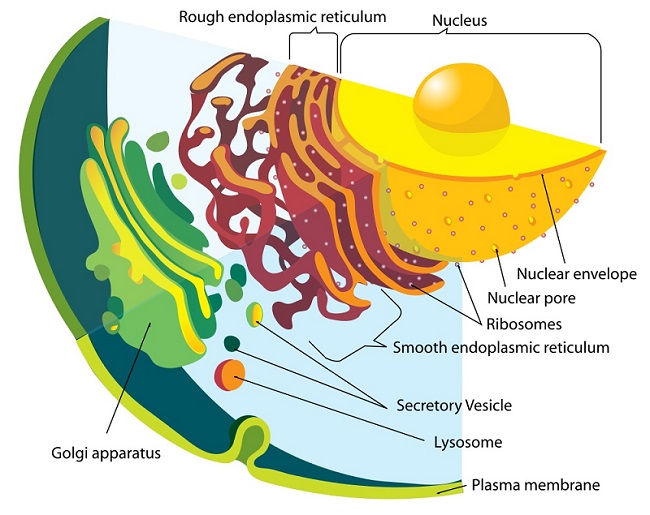
Endoplasmic Reticulum Definition, Function, Structure Biology Dictionary
Endoplasmic reticulum can exist in two forms: rough ER and smooth ER. These two types of ER perform some very different functions and can be found in very different amounts depending on the type of cell. Rough ER (RER) is so-called because its membrane is dotted with embedded granules—organelles called ribosomes, giving the RER a bumpy.